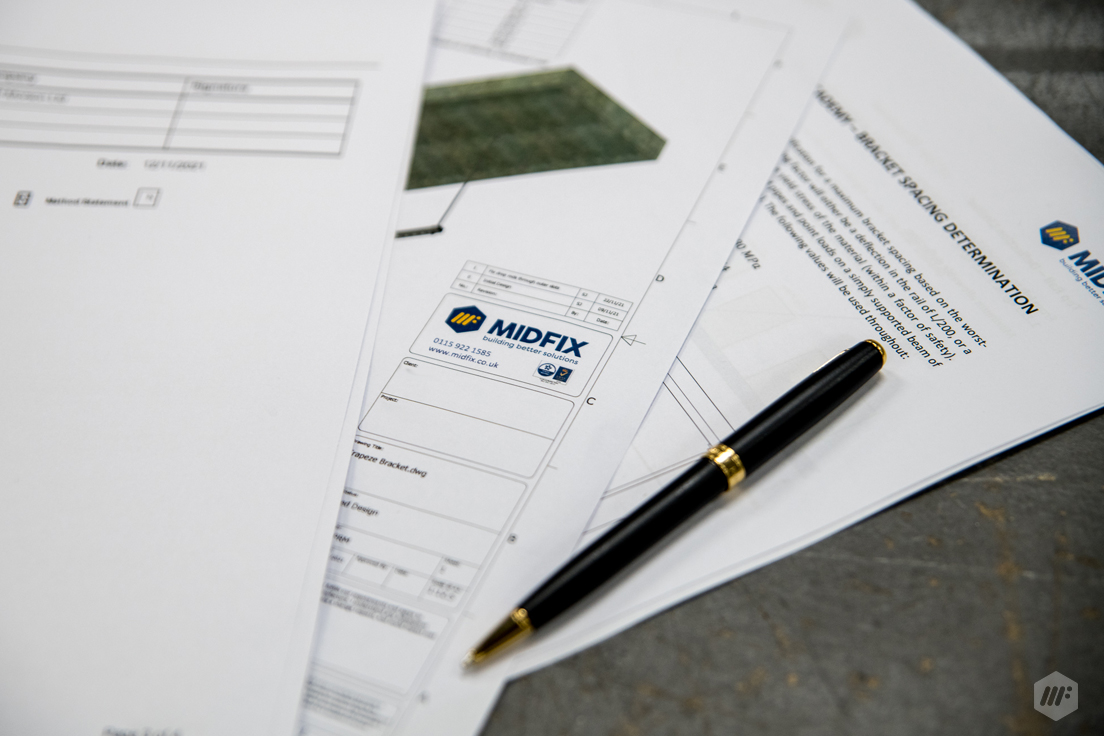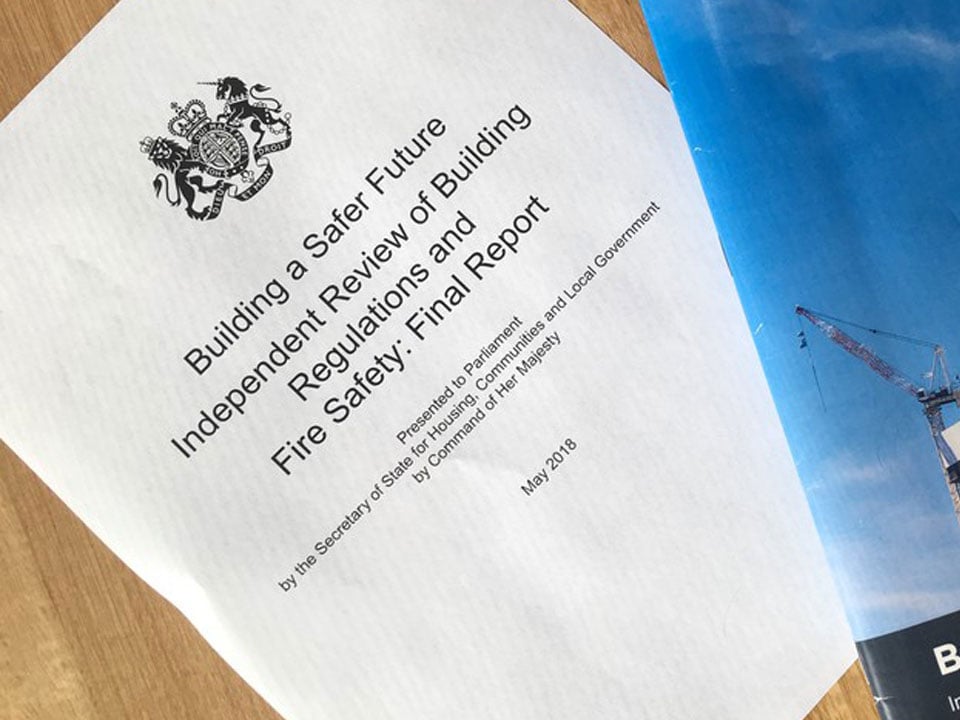Offsite construction – as an M&E contractor you’ve no doubt heard this phrase many a time. You’ve likely also heard all about how this is the future of construction. But maybe you’re not sure why and where all this ‘hype’ has come from. What’s wrong with what you’ve been doing for decades? Why change something that works? Is it worth all the time, effort, and money?
To answer these questions, let’s first break down what we mean by the term.
- What actually is offsite construction?
- We're dealing with a changing landscape
- How offsite fabrication aligns with the new emerging M&E contractor
- Building trust with Tier 1 contractors
- This isn’t about your workmanship
- The future of offsite construction
- Is it worth it?
What actually is offsite construction?
Offsite construction is defined simply as the method of manufacturing and part assembling components away from the live project site. It’s often conflated with other terms such as prefabrication, DfMA (Design for Manufacturing and Assembly), and MMC (Modern Methods of Construction) – the four intertwine and are all a part of each other.

We're dealing with a changing landscape
There’s a reason why offsite fabrication has been dubbed the ‘future’ of construction time and time again and that’s because the industry is evolving, and the principles behind offsite fabrication align with the industry’s goals. Over time, there’s been an incremental aspiration towards change and safer environments. However, every once in a while, something happens that changes the scope significantly. The tragic Grenfell tower fire in 2017 was an example of that for the construction industry. It was a construction failure on a very large scale, that cost the lives of many. Even now, five years later, it makes people sit up and pay attention. The tragedy somewhat pioneered this whole movement towards a safer, more compliant future in construction, which has become particularly noticeable in the last two years. Whereas there has always been a more reactive approach in construction, we’re now getting closer to becoming proactive. The concept has been around for a while, but it was only until 2018 after there was a House of Lords Select Committee focused on offsite construction that there was a certain spike in popularity of the idea of offsite construction. Before that, however, Mark Farmer had written a report in 2016 titled ‘Modernise or Die’, which highlighted key failings in the UK construction industry. The report, as well as the Select Committee, had a particular focus on labour because the industry is facing a skills shortage (which has been accelerated with COVID) and offsite construction is one way of combatting this challenge. Nevertheless, this was all in the past 6 years – when scaled next to the hundreds of years of construction, it seems a bit late to start questioning outdated methods… but, I digress. Additionally, the government is planning to introduce a requirement as part of a stricter regulatory regime for all buildings and construction projects called the ’golden thread’ – which is the information about a building that allows someone to understand a building and keep it safe, and the information management to ensure the information is accurate, easily understandable and accessible (GOV.uk, 2021). What all of this means for the M&E sector is that there is a new ‘type’ of M&E contractor emerging; one that values safety and evidence over commercial cost.
How offsite fabrication aligns with the new emerging M&E contractor
I suppose there are two ways of looking at offsite construction and its benefits: the first is from a commercial point of view, where it’s more about culture change and taking advantage of its tangible benefits in terms of time-saving, labour-saving, cost-saving, etc. The other is from an evidence-based perspective, taking into account the Hackitt report, and focusing on safer buildings, product data, provability, and traceability. Offsite construction is safer because it requires less staff onsite, and takes the risks away from the site and into a quality-controlled environment, reducing the risk of falls, injuries, collapses, etc. Meanwhile, obviously, the structures are also being built to be safer and longer-lasting, due to the preparation and analysis required. The report states: “For higher-risk residential buildings (HRRBs), principal contractors and clients should devise contracts that specifically state that safety requirements must not be compromised for cost reduction.” So, while offsite will cost more (only in the short-term), the aforementioned emerging contractor appreciates the long-term value of it, as well as the bigger picture of being able to prove the safety and accuracy of his installations, therefore avoiding financial and reputational damage as well as safety hazards. The Grenfell tower tragedy is just one event that resonates with everyone, because it could’ve happened to anyone but would’ve been easily avoided had there been stricter rules in construction. But, all in all, you wouldn’t be compromising much by implementing offsite construction because it is mutually beneficial for all parties involved – it’s not just for the best interest and the safety of individuals. Everyone’s happy! However, there is also a prevalent fear of change in the industry, as mentioned, and this is likely because of a lack of confidence and the belief that they aren’t competent enough to make the leap. Moreover, although many say that offsite is the only way forward, there is a looming feeling that it might deskill workers in the industry. Nonetheless, more M&E contractors nowadays are becoming part of the offsite manufacturing fan club.
'Building a Safer Future' - the Independent Review of Building Regulations and Fire Safety became a poignant moment for the safety of future buildings.Building trust with Tier 1 contractors
The M&E contractors’ typical customers are Tier 1 contractors, which just emphasizes the importance of offsite fabrication and evidence-based bracketry designs. It’s a significant concern for Tier 1 contractors as there’s a lot more responsibility placed on them, and that then trickles down onto the M&E sector. Because the sector is moving towards this approach from the top-down, those that aren’t interested in it risk the possibility of being left behind and possibly not trusted, and those that do engage in it become much more attractive to the Tier 1 contractors that are actively moving in this direction.
This isn't about your workmanship
Often people in the industry will take offense to the suggestion of this new landscape, viewing it as an insult to their years of experience and workmanship. However, it’s important to look at it more holistically – it’s not about the quality of your work; rather, it’s about your ability to prove it. You’d be optimising and improving efficiencies, with the added benefit of evidence to back it up. That’s the fundamental truth that needs to be understood across the board. Is there a sufficient paper trail behind your M&E supports that can prove that this will do what it’s supposed to do? Have you done everything you can to make sure it won’t fail and cause any injuries and/or deaths? The phrase “I’ve always done it this way and never had any issues” is tossed around quite often. Sure, stick to your guns, I guess. Of course, this could’ve been said about anything in life and we never would’ve progressed, and continued to live as cavemen – but that’s neither here nor there. With offsite construction, you automatically will get that provability, whereas with traditional/onsite methods it’s much harder to apply that evidence-based approach.

The future of offsite construction
As established, people throughout the entire supply chain from Tier 1 contractors, M&E contractors, as well as other subcontractors, are joining this movement of safer construction. So, it’s expected that there will be an increasing number of standards that will be complied with, more rigorous testing and evidence, and a continued effort to be proactive. For example, as of now, supports are typically viewed as commodity items where they are procured based on price alone, and often even installed without adequate training. This, of course, is not a safe approach, but it’s the cultural legacy that’s embedded in the industry that evokes this mindset and is one of the reasons why the M&E sector has been slow at taking up the principles of offsite manufacturing. But cost shouldn’t be the only factor – nor the main. The antithesis to that is that the supports are ruminated on well in advance, and based on evidence and clear information – and offsite fabrication requires all of this.
Traditional construction tends to rely heavily on people’s expertise and knowledge; and while that’s all well and good, there needs to be the provability aspect – something that comes as a requirement with offsite. It can be said that the ‘currency’ of construction will be based on safety, evidence, and trust, over and above cost as it always has been. In addition, certain digital manufacturing techniques from other industries, such as the automotive, are now beginning to be applied to offsite manufacturing. Cars, for example, are directly related to safety, so the industry was very quickly forced into building well-designed, safe, and fit-for-purpose cars. I’m not sure why the same wasn’t done for construction/buildings, though; you know, the things we sleep, work, learn, do everything in… I suppose there are more fatalities due to car accidents, and the construction industry isn’t innovation-led. But, you’d think we would adapt to ensure we can live our entire life safely – never mind!
The previously mentioned Select Committee’s long-term view was to increase the amount of standardisation in the construction industry. For buildings that are comprised of design and layout repetition, this can be done offsite, where subassemblies and rooms are premanufactured in such a way that they’re kept in stock rather than just being manufactured for each specific project. Bathroom pods are a contemporary example of this. Having a finite number of designs to choose from would increase standardisation and greatly speed up construction. The vision that offsite fabrication aims for is the ability to do this on a much larger scale; for example, for hospitals, prisons, and projects where there isn’t a vast difference in the design.

Is it worth it?
Well, it really depends on you. Do you want to be this contractor that’s fixated on safety and evidence? Or are you comfortable with how things are currently going with the reactive approach? To be honest, if you’ve read this far into the article and still aren’t convinced of the importance of design and offsite fabrication, then I’m not sure it’s for you. But to each their own! It’s no secret that certain aspects of traditional construction will always remain, having withstood decades of practice. But it’s equally as true that offsite and MMC will also prevail. It’s up to you if you’d like to be a part of this ever-growing movement – are you in?




